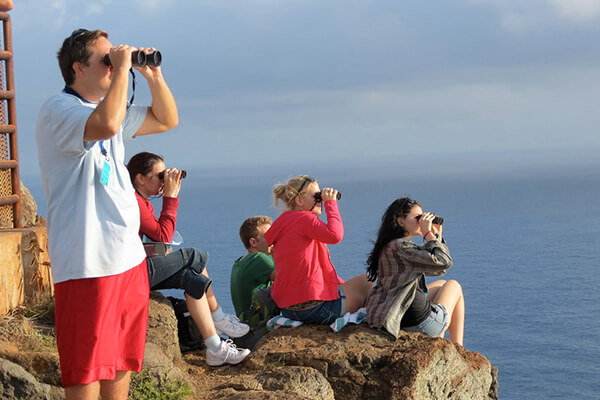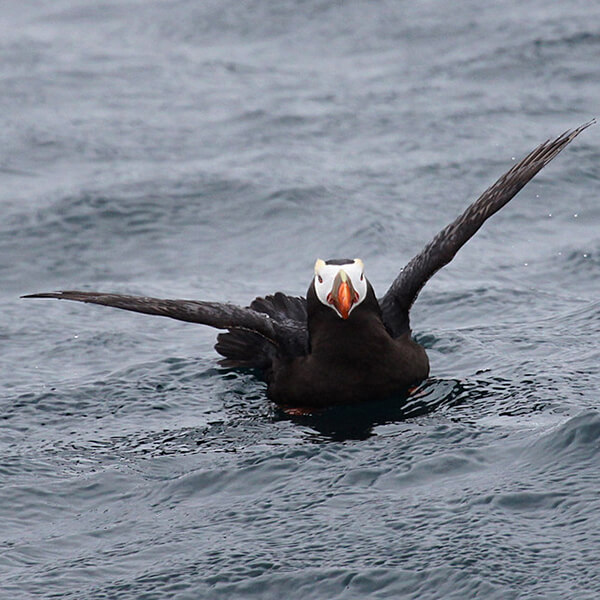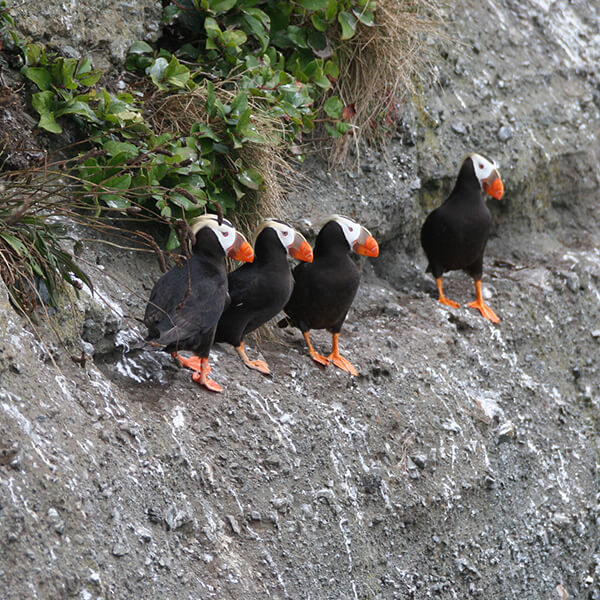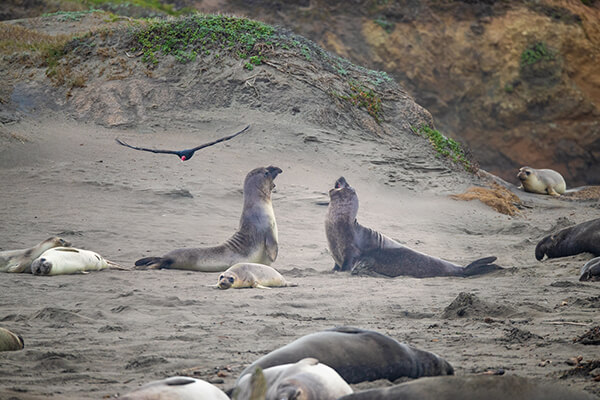
Hang Back and Enjoy the View
Wildlife need their space.
To keep everyone safe, healthy, and stress-free, it's important to give wildlife plenty of space. Keeping your distance from wildlife also gives YOU the best chance to observe some amazing natural behaviors that you do not get to see when an animal feels stressed or threatened!

Using binoculars is a great way to get a closer look at wildlife while keeping your distance!
Photo: Paul Wong/NOAA
When viewing wildlife, move back to the recommended or legally required distance (learn what they are here). It is also helpful to learn some of the common signs of disturbance in wildlife before you set out. If you see any of these behaviors in an animal, it’s safe to assume that you’re too close:
- Fleeing
- Fidgeting
- Freezing or staring
- Rapid changes in speed or direction
- Increased vocalizations
- Aggressive behavior
Individual animals’ reactions will vary, so carefully observe all animals in the vicinity. You can learn more of the common signs of disturbance in different marine species here.
See A Spout, Watch Out!
Even when watching wildlife from a boat, maintain a proper distance. It is best to approach slowly from the rear or side and never from the front. Stop your engines to reduce disturbance; too much vessel noise can block communication between animals. If the animal is close, wait until moves to a safe distance before engaging your propellers.
Anyone who has ever run in a race or completed a vigorous workout knows the feeling of exhaustion that often comes afterwards. You feel tired because you’ve used up all or most of your energy, and you probably won’t be able to exert that much energy again for a while - at least until you’ve had a chance to rest and eat.
Animals function similarly. They acquire energy from their food, but they are constantly using this energy to hunt, avoid predators, attract mates, and raise their young. When you get too close to an animal and it becomes stressed or has to flee, it uses up some of their precious energy. Energy can be a matter of life and death for wildlife - if they have already used up their energy trying to escape humans, they may be too exhausted to escape a predator or hunt food for their young. Give wild animals the best chance at survival by appreciating them from afar.
 ×
×Photo: Sophia Webb/NOAA
 ✓
✓Photo: Mary Sue Brancato/NOAA

When you keep your distance, you maximize your chances of seeing natural behaviors, like this display of play-fighting from two young elephant seals in Monterey Bay National Marine Sanctuary.
Photo: Matt McIntosh/NOAA
Additional Resources
- Viewing Marine Life
- See A Spout, Watch Out!
- There is No Selfie Stick Long Enough!
- Socially Distancing Affects Wildlife, Too
- Amazing From Afar
- How Would You Like It?

Take the Pledge
Respect. Protect. Enjoy.
#WildSanctuaries

